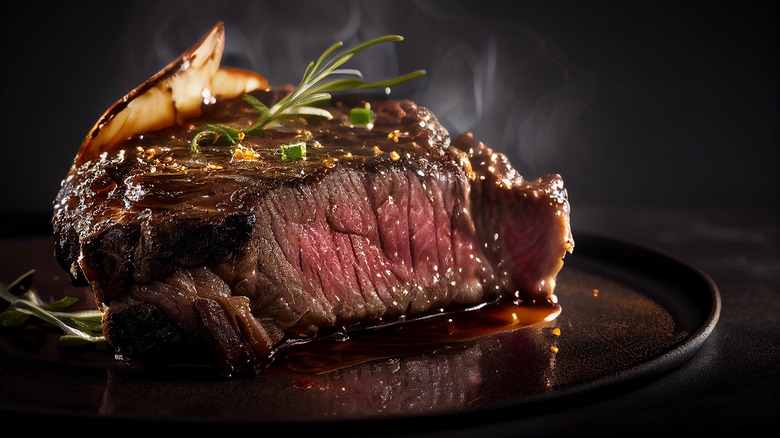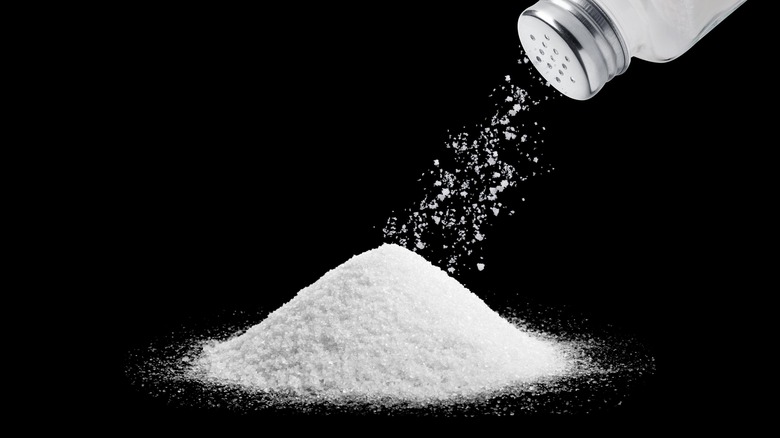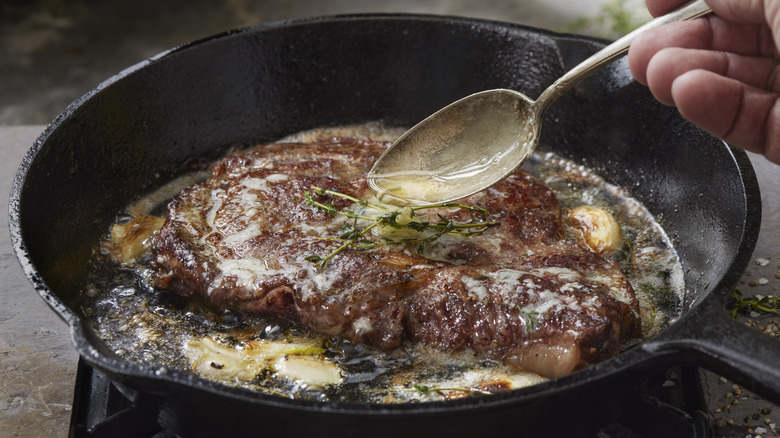Why You Really Don't Need To Marinate A Ribeye Steak
A marinade can be a beautiful thing: A fragrant blend of an acidic liquid like citrus juice or wine, redolent with aromatics like bay leaves and cloves of garlic, fruity olive oil, and salt and pepper, a soak in an easy, well-made marinade can really bring a lean roast or steak to life, both tenderizing and infusing them with flavor. But when it comes to a good ribeye steak, marinating is a complete waste of time. For starters, ribeye steaks are cut from the primal beef rib section of the cow (typically between ribs nine and 11, to be precise) – and these are not seriously exercised muscles like the ones found in the flank. Because of that, they're more tender and marbled with fat. And, as the great Julia Child once observed, "Fat gives things flavor." Think of ribeyes as pre-tenderized and self-basting, and save the marinade for your next flank steak.
The fat in marbled cuts like ribeye steaks enhances tenderness, juiciness, and flavor. Ribeyes are as marbled as they are because they don't contain just one muscle — in fact, a ribeye steak is comprised of several different longitudinal muscles including the tender eye (longissimus dorsi) and the fatty rib cap or deckle (spinalis dorsi), each surrounded by intramuscular fat.
Searing is believing
There's yet another reason to never marinate a ribeye steak: it will prevent you from getting a good seared crust on the exterior; one of the most delicious aspects of cooking them. The fact is that most marinades only penetrate the surface of the steak or roast, and their acidic nature can turn meat to mush if left too long. This brings us to the only prep your ribeye steak needs: a generous coating of salt.
Salt is its own kind of meat tenderizer: it draws out moisture, which becomes a brine to be reabsorbed, which helps it also break down muscle proteins on the interior as well as the exterior of the cut. You can salt your ribeye and leave it overnight uncovered in the fridge, or when you take it out to come up to room temperature before cooking. Either way, pat the steak completely dry before searing.
The science of palatable fat
We all might agree with Julia Child about fat giving things flavor, but the scientific literature behind this truism is utterly fascinating. We're literally built to love eating fat. Studies have shown that receptors on our tongues recognize the introduction of long-chain fatty acids and communicate this to our brain, which releases beta-endorphins and dopamine. That moment of sublime exultation you experience after taking a bite of a perfectly-cooked ribeye? Much of it has to do with fatty acid transporters and circumvallate papillae.
We're mammals, after all, and mammals tend to prefer high-fat foods. Why? Fat helps our bodies do a number of important things such as storing energy, regulating body temperature, and producing hormones. Scientists call this dietary predilection a "hedonic preference," and although we don't think they mean that strictly in the sense of sensual indulgence, cook a ribeye steak in a pan like a pro and decide for yourself.


